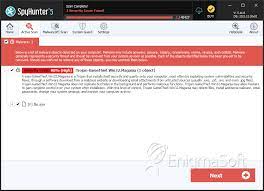How to Remove Rootkit.Win32.Magania using Windowsssh

How to Remove Rootkit.Win32.Magania using Windowsssh
Rootkits are a type of malware that can be difficult to remove. Rootkits can hide themselves and other malicious files on your computer, making them hard to find and remove. One type of rootkit is Rootkit.Win32.Magania. Magania is a rootkit that targets Windows systems. If you think you have a Rootkit.Win32.Magania infection, you can use Windowsssh to remove it.
Windows ssh is a command-line tool that can be used to scan for and remove Rootkit.Win32.Magania infections. To use Windows ssh, open the Command Prompt and enter the following command: “windows ssh -scan -remove”. This will scan your computer for Rootkit.Win32.Magania and attempt to remove it if found. You should run this command from an Administrator account to ensure that all files can be scanned and removed properly.
free windows pdf editor
If you’re looking for a free PDF editor for Windows, then you’ve come to the right place. In this article, we’ll show you how to remove Rootkit.Win32.Magania using Windows SSH.
Rootkit.Win32.Magania is a type of malware that can infect your computer and give attackers remote access to your system. This particular rootkit is known to target Windows systems, so it’s important to be extra vigilant if you’re running Windows.
Fortunately, there are a few things you can do to protect yourself from this type of malware. First, make sure that you have a good antivirus program installed on your computer. Secondly, don’t click on any links or attachments that you’re not expecting. And finally, if you do suspect that your computer has been infected with Rootkit.Win32.Magania, then you can use Windows SSH to remove it.
To do this, simply open up a Command Prompt and type in the following command: “sc stop WinDefend && sc delete WinDefend”. This will stop and remove the Windows Defender service, which is known to be ineffective against this particular rootkit.
Once that’s done, you should then run a full scan of your system using an anti-malware program like Malwarebytes or Spybot Search & Destroy. This will help to remove any other malicious files that may be present on your system.
And that’s it! By
installing pip on windows

To install pip on Windows, you will need to download the following:
– The latest stable version of Python from the Python website. Be sure to download the “Windows x86-64 executable installer” for 64-bit systems.
– The get-pip.py file from the pypa.io website.
Once you have downloaded these files, open a new Command Prompt window and change to the directory where you saved the files. For example, if you saved the files to your “Downloads” folder, you would type the following:
cd C:\Users\YourName\Downloads
Next, run the Python installer by typing the following at the prompt and pressing Enter:
python-3.6.4.exe
Follow the prompts to complete the installation. Next, install pip by running the following command:
python get-pip.py
dual boot windows and linux
When it comes to removing rootkits, Windows users have several options. One of those is to dual boot Windows and Linux. This allows you to run both operating systems on your computer, and gives you the ability to remove the rootkit from your Windows installation while still being able to use Linux.
To dual boot Windows and Linux, you will need to install both operating systems on your computer. You can install them on separate hard drives, or you can partition your hard drive so that you have a separate section for each operating system. Once you have both operating systems installed, you will need to configure your computer to boot into both of them.
Once you have both operating systems up and running, you can begin the process of removing the rootkit from your Windows installation. To do this, you will need to use a rootkit removal tool. There are many different tools available, but we recommend using Malwarebytes Anti-Rootkit. This tool is designed specifically for removing rootkits, and it is very effective at doing so.
Once you have downloaded and installed Malwarebytes Anti-Rootkit, simply launch the program and click the “Scan” button. Malwarebytes Anti-Rootkit will then scan your computer for any traces of the rootkit. If it finds any, it will provide you with a list of all the files that it has found. Simply select all of the files and click the “Remove Selected” button
